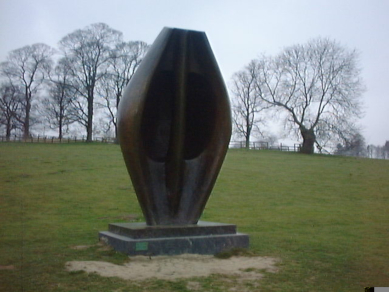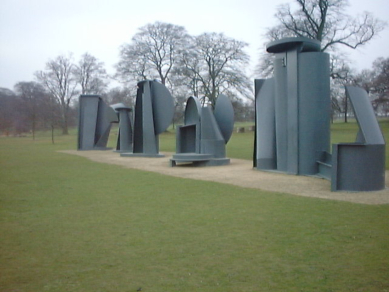Saturday 1st March – Blackburn Meadows – A gorgeous male Goosander glides across the pond, its black and white plumage glossy. (The black is really dark green, but it looks shiny black in the morning gloom.) The much dowdier female follows him. Teal, Mallard and Tufted Duck are also in pairs. A Wren hops through the dead reeds at the edge of the water. A Coot bobs down into the water and Dabchick pops up. A Robin flits out of a bush to grab something off the short grass and dashes back into the twigs again. A Dabchick calls from the back pond. A Rook stalks the mud. There are usually a number of Teal here, but no sign of them. Moorhens run across the mud, flicking their tails so the white outer feathers give a clear signal of alarm. A Chaffinch is bright breeding plumage sings beside the canal.
Thursday 6th March – Willowbank – The usual suspects are singing across the hillside, but pride of place goes to the liquid and rich song of a Mistle Thrush high in the bare bones of an Ash. Green shoots emerge from the thorny branches of a Dog Rose. Pussy Willow is shyly peeking out from its brown husk.
Monday 10th March – Fleets Dam – Although there has not been a great deal of rain, the River Dearne is flowing faster and higher than of late. Water is plunging over the full width of the weir. There is a chorus of bird song above the rustle of branches in the gusting wind. Fleets Dam is quiet. A pair of Mallard fly overhead, stall and look like they will drop down to the water, but decide to fly on. A lone Great Crested Grebe preens on the centre of the lake. A Coot bobs on the wavelets. Catkins tremble. Greenness pushes through the black soil and brown remains of last year's flora – Stinging Nettles, Cow Parsley, Garlic Mustard and Dandelion.
Wednesday 12th March – Willowbank – Although fine and dry weather has been forecast, it is grey, blowing and damp. A Willow Tit calls insistently from the Hawthorn scrub. A Greenfinch sings from the top of the tallest bush. A pair of Mallard and one of Teal are on the Loop ponds. There was a pair of Mute Swan there recently, but no sign of them now. Plenty of Magpies – as usual.
Home – The delicate crocuses have suffered in the rainy weather, but many still stand bright and proud. Daffodils are just emerging, brilliant yellows into the greyness of late winter. Something has been at the cabbages and kale; time for a beer slug trap. But there is a real sign of spring – frog spawn in the pond!
Saturday 15th March – Barnsley Canal – A few days of dry weather with sunshine and a drying wind yesterday, makes the tow-path passable. The sloping sides of the Smithies end of the canal, where it is almost dry, have been slashed and little is yet growing. Further along greenness is returning. A Song Thrush sings by the allotment, but flies off at my approach. A Robin remains and watches warily. A Great Spotted Woodpecker is drumming and I eventually locate in a high Ash on Willowbank. There are three young Mute Swans on the Loop, ten Teal and a couple pairs of Mallard. A Great Tit calls a truncated trunk of its song from the great cracked Willow.
Tuesday 18th March – Harborough Hill – Across from the old glassworks site onto rough ground. Bright sunshine follows frosty nights. Wood Pigeons sit atop Hawthorns at regular intervals, surveying their territory. Blue and Great Tits chatter down the steep slope to the canal below. A Chiffchaff, first of the year, calls from Ash trees – spring is really here.
Thursday 20th March – Barnsley Canal – The tow-path continues to dry out in these warm, sunny Spring days. Pieces of fluff blow down the canal from the disintegrating heads of Bulrushes. A Chiffchaff bounces through the bushes. Its calls are threefold – a slightly croaky short note, a wheeep and the onomatopoetic chiff chaff. A cock Reed Bunting, with a glossy black head, is checking the Bulrushes. Mallard, Teal, a Grey Heron and Moorhens are on the Loop and surrounding mudflats. A Lapwing soars and swoops over the fields beyond the river calling its regional name peewit. Willow Tits call nasally from Hawthorn thickets.
Friday 21st March – Barnsley Canal – First day of Spring and its cold and grey. A Long-tailed Tit bobs across the canal and alights on a Hawthorn sapling looking like a tiny panda. It jumps around seeking insects. There are a decent number of Bullfinches along the path; the males in their John Bull gaudiness pink shirts, black hats and steel grey backs. The females are the same but seen through a smoked glass window. A Chiffchaff calls from Willowbank. Chaffinches call pink jauntily. The water weed (Water Fern?) has turned colour making the canal look like it has been sprayed with red lead. A Treecreeper scurries around the trunk of a Silver Birch like a mouse. New shoots of rushes have appeared, bright green in the dun deadness of last year’s. A Cormorant sits at the top of one of the dead trees in the Loop.

Yorkshire Sculpture Park - Bretton Hall is located north of Barnsley beside the village of West Bretton. The large stately house is now part of the University of Leeds and the grounds house  the Yorkshire Sculpture Park, which, among special exhibitions and other pieces, is home to the largest collection of Henry Moore sculptures in the world. The sun is now emerging from the mist as we head down the gentle slope to Bretton Lakes. Two Moore statues “Draped Woman 1957-58” and “Large Totem Head 1968” sit on the hillside. A Green Woodpecker calls from trees to the east and Canada Geese are making their usual racket from the lakes below. At the foot of the slope a canal runs parallel with the lakes.
the Yorkshire Sculpture Park, which, among special exhibitions and other pieces, is home to the largest collection of Henry Moore sculptures in the world. The sun is now emerging from the mist as we head down the gentle slope to Bretton Lakes. Two Moore statues “Draped Woman 1957-58” and “Large Totem Head 1968” sit on the hillside. A Green Woodpecker calls from trees to the east and Canada Geese are making their usual racket from the lakes below. At the foot of the slope a canal runs parallel with the lakes.  Daffodils are in bloom along the banks. Two pieces by Anthony Caro “Rusted City 1996” and
Daffodils are in bloom along the banks. Two pieces by Anthony Caro “Rusted City 1996” and  “Promenade 1996” are placed here. A pair of Canada Geese sit beside the works. A bridge divides the lakes. From here heronries can be seen in both directions. One has a number of Grey Herons standing beside nests. The other is a single tree and looks like a Kurosawa ghost wood. The other side of the bridge is a tree stump with a piece by Antony Gormley “One and Other 2000”. Rooks caw in a rookery. Chiffchaff and Great Tits sing. Ransom (Wild Garlic), Windflowers and Celandines are blooming and a green carpet of Dog Mercury is growing fast in the mild Spring air.
“Promenade 1996” are placed here. A pair of Canada Geese sit beside the works. A bridge divides the lakes. From here heronries can be seen in both directions. One has a number of Grey Herons standing beside nests. The other is a single tree and looks like a Kurosawa ghost wood. The other side of the bridge is a tree stump with a piece by Antony Gormley “One and Other 2000”. Rooks caw in a rookery. Chiffchaff and Great Tits sing. Ransom (Wild Garlic), Windflowers and Celandines are blooming and a green carpet of Dog Mercury is growing fast in the mild Spring air.
Sunday 30th March – Trans-Pennine Train, Worsbrough – First day of British Summer Time and it is a glorious Spring morning. Birds sing in the sunshine as we wander along the trail, the old Worsbrough to Penistone railway line. A confiding Chiffchaff hops a few feet away through yellow pollen covered Pussy Willow. Across the valley, Stainborough Castle, now Northern College, sits on the opposite slope. The M1 motorway runs noisily through the valley.